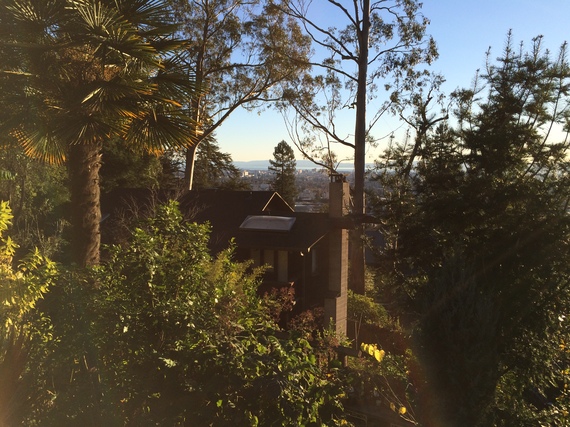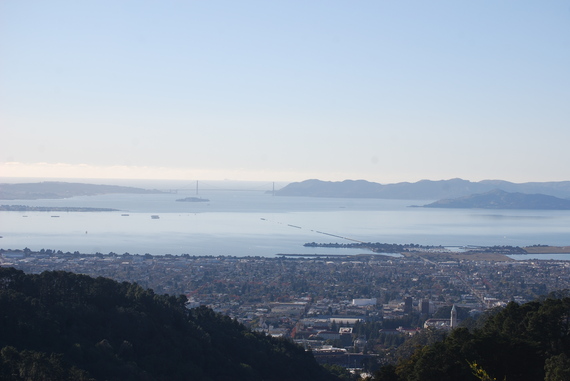What do stories about angels mean to modern Christians?
From my first day in the Berkeley Hills, I fell in love. I fell in love with the place, with the cypress trees, coast live oaks, eucalyptus, bay trees and the majestic stands of redwoods. I spent hours gazing out at the sweeping views of the bay. From watching scores of sunsets through the Golden Gate, I knew exactly where the sun would go down on the horizon at any season.
The Berkeley neighborhoods seemed magical to me: the dark, arts-and-crafts-shingled houses connected by hidden staircases and cracked old walls, and the smell of earth, fog, honeysuckle, eucalyptus, baking bread and coffee entranced me.
On Saturday mornings, I would explore the canyons above the university. I spent hours walking and running along the fire roads in the hills. I knew where to find hound's tongue and forget-me-not flowers, an old abandoned plum orchard and the deer trail shortcut to the bench looking out over the arboretum.
Back then it seemed like an unwise distraction from studying. In retrospect, that time alone praying was crucial to the formation of my adult spiritual life. The older I get, the more I understand what I saw up there. Today I know the names of the plants that thrilled me then. I have learned about the geological and meteorological forces that shaped my experience there. But more than that, I have a better understanding of how that whole environment came into being.
In his essay "An Oak Grove," Robert Hass describes the human history of the Berkeley landscape. In the mid-1850s the East Bay hills were simple grasslands. John McLaren, the Scottish immigrant who laid out Golden Gate Park in San Francisco and was its first superintendent, has been called the inventor of California gardening. He was friends with two other Scots: The painter, William Keith, and John Muir, founder of the Sierra Club. These three, in turn, befriended the architects Bernard Maybeck and John Galen Howard. This group largely brought into being the northern California aesthetic that I love so much. I mean by this the landscape as much as the buildings.
An inscription in the campanile about John Galen Howard explains that: "His monuments lie all around you." This means more than just the buildings he designed. Howard hired John McLaren's only son, Donald, to do much of the landscaping at the Cal campus, and the hills reaching into Strawberry Canyon.
My point is that a great deal of care and imagination went into creating the feeling of wildness that these places evoked in me. It was not merely a matter of accident. The personalities of these people had become part of the landscape in a way that I could subconsciously sense.
As Christians enter Lent, our major season of spiritual renewal, we read about angels that ministered to Jesus during his 40-day experience of being tempted in the wilderness (Mk. 1). The Greek word angel means "a messenger," and is linguistically related to the word gospel, which we translate as good news.
Angels for Jesus, and us also, are a kind of embodiment of the good news that we have a connection to God -- that something about this world and the people we love help us to transcend ourselves. In the Book of Revelation John of Patmos writes about the way whole groups of people have a shared spirit. He writes about the angels of ancient churches.
This week I have been thinking about the barely-recognized presences that accompany us all through our lives. We carry with us the voices of beloved grandparents and parents, music teachers and coaches, our first boss, old lovers and former spouses, someone at church who took an interest in us and neighbors now long gone. Some of these voices sound just as clear as the day we first heard them. Others have faded into a quiet so profound we can hardly discern them.
I am grateful for the angels of eighteenth century naturalists, artists, designers and environmentalists, and the good news about God's creation that they still exemplify.

